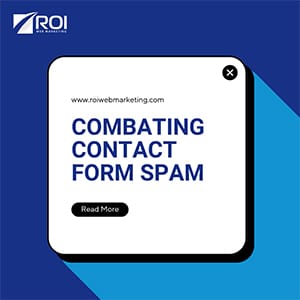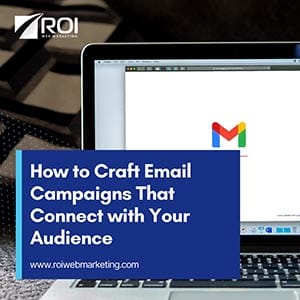
I’m often asked questions about how and when I should blog. The answer is: it depends on your business.
I always mention that blogging and social media marketing need to work with your business and procedures that you have in place.
Blogging can’t be a burden on you and/or your business.
If you feel stressed about blogging or don’t have the time to do it, you need to evaluate whether it would be a good idea to either hire someone to help you with it or whether it’s important to your business at all.
Here’s what I suggest to my clients about blogging and how they can manageably keep their website up to date and maximize the impact of each blog post.
What’s the purpose of a blog?
The purpose of your blog is to achieve the following:
- Keep your current customers informed about what’s happening with your company.
- To reconnect with current customers by staying on top of mind (may even make a new sale from an existing customer).
- Let people know that you are still in business and are actively updating your website with relevant information.
- Prove that you are the expert in your field by showcasing your knowledge.
- To attract new potential customers via Google Search (SEO).
What should I blog about?
Here are a few examples of what you can blog about. I’ll be releasing another blog article with more examples in the near future.
- Educational: Educate your ideal clients on the benefits of your product or service. Answer questions commonly asked by your customers.
- Testimonials/Case studies: Let people know how others have experience with working with you.
- Promotional: Mention a current special offer or feature a product or service.
- Specific Detail: Feature, describe or romance a specific service or product in more detail.
- Industry-Related: Explain what’s happening in your industry that your customers should know about. What’s news to them that they should be aware of?
How do I structure my blog post?
The layout of your blog post should include the following and be ideally 500-600 words. Keep in mind that it’s not about writing a number of words, it’s about quality and relevant content that people actually want to read. You have 9 seconds to grab their attention in the first paragraph.
- Hook Them: Start with intriguing content. What are the benefits of committing to read this post?
- Give Value: Tell people something interesting that they should care about.
- Explain Benefits: Let people know why you are explaining this content to them.
- Conclusion: Always end with some sort of call-to-action or sum up the reason for the post.
- Author Bio: It’s good to include your bio or company bio within your blog. WordPress and Joomla come with this built in as long as your theme is compliant.
How often should I blog?
Consistency is more important than anything when you commit to starting a blog. Don’t start one if you don’t intend to keep it up to date. I suggest starting with 1–2 blog posts per month. Remember, this needs to work with your current business. If you can be making a sale or ensuring customers are happy, take care of those things first before updating your website with a new blog post. The reason to start with 1–2 posts is because once you’ve written your blog post, you need to ensure you give your post some exposure so that people can see the new content you’ve just posted.
How do I share and market my blog post?
Once you’ve posted your update to your website, you’ll want to get people to see it. How people follow you is dependent on your industry and what form of following you’re targeting.
Send your blog content to your email database of customers
For the most part, email is still the number one way to reach customers, so I suggest that email be the first priority for any business to ensure they send their blog post content out. I’d also suggest using a software to manage your database (MailChimp, Constant Contact, AWeber). Feel free to include a short paragraph teaser of your blog content and then link to your blog from there for people to read the full post. Alternatively, depending on your customers and the length of your blog post, you could include the full post in the email.
Link your blog post to your social media channels
One of the biggest factors that has been working with SEO lately is to share your blog post link from your website on social media. The more people who share and like that link, the better. Be sure to share your blog by taking your website link and posting that directly. The more shares, likes, etc. on this will have a direct impact on your SEO. Google is scanning the Internet to see how social your website is and how many links point back to it. This is a great way you can help increase your SEO rankings while getting exposure through social media activity.
It will never be perfect
Don’t be afraid and don’t overthink your post. Keep it simple.
This blog post took me less than an hour to write and proofread. No, I did not count the number of characters in the post and yes, I could have included more keywords to optimize it further. What works for my business is to commit to an hour to educate my current clients and send you this newsletter via email and social media. The marketing of the blog post may take another 30 minutes to 1 hour to complete. In conclusion, if you have 2 hours of time that you can fit in your month to write a blog post and share it with your customers, I’d suggest you do this.
If you feel people keep telling you that you need to update your website with content, make it happen one way or another. If you need some support, we are here to help.
Happy blogging!


















